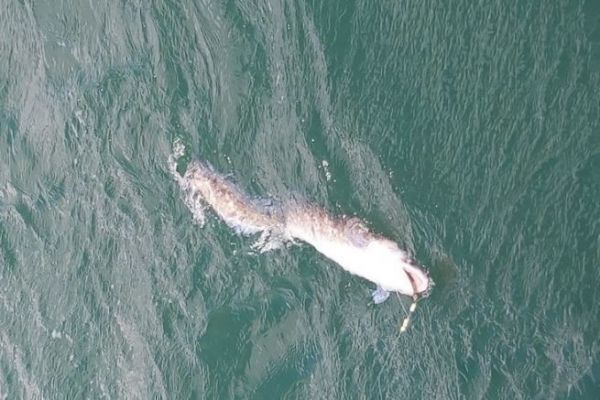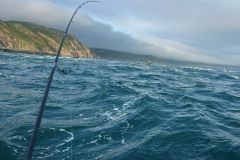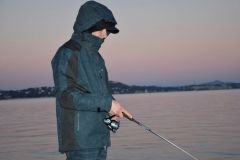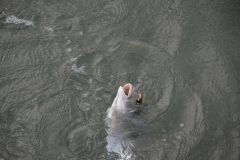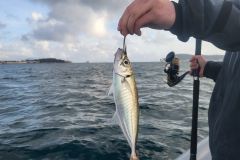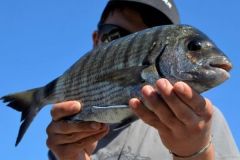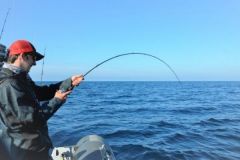How to recognize it
The conger eel bears a striking resemblance to a gigantic eel. It has a very elongated, almost cylindrical body, compressed laterally at the back. Its head is slightly underdeveloped, with an elongated, slightly pointed snout. The upper jaw is longer than the lower. Both jaws are armed with small, slightly curved and very sharp teeth, more or less identical in size.
The mouth is large, lined with thick lips, and the eyes are clearly larger than those of the eel. On the back, the long fin starts just after the pectoral fins and gradually rises. The pectoral fins, inserted above modest gill slits, are well developed.
It has a thick, mucus-covered, non-scaly skin. Its color varies according to the bottom of its habitat, generally brownish-gray, darker on top. The long dorsal fin is white-gray and the pectoral fins are striped with dark gray.
Distrustful by nature, this sea snake is also very curious, and unlike the eel, it doesn't shy away from noises - in fact, it seems to be attracted by them. Anything strange that happens around its lair arouses its curiosity, but it is also irresistibly drawn to anything that happens on the surface, just like anything that emits sound or vibration.
Behavior and distribution in France
Lazy by nature, conger eels spend all their time on rocky, muddy or sandy bottoms. Its activity is mainly nocturnal, and in some ways reminiscent of that of the eel. In fact, during the day, the conger remains hidden and almost inactive in its rocky hole or deep in the sand and mud.
Like another of its relatives, the moray eel, it is very aggressive on dark days or at night when out hunting. It becomes an avid predator, ready to attack anything that moves around it, fish, crustaceans and molluscs.
Present in all seas bordering France, two other species of conger eel exist in the Mediterranean: the large-nosed conger eel and the Balearic conger eel. Both are smaller, measuring no more than 40 to 50 cm.
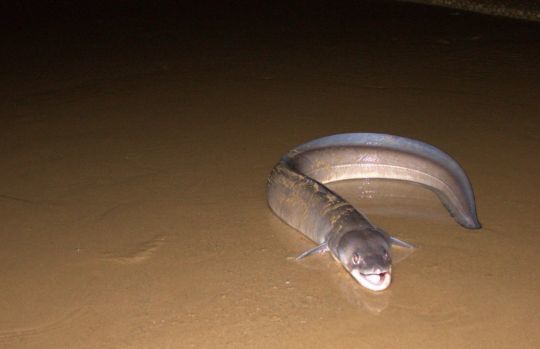
Feeding, reproduction and habitat
A voracious predator, the conger eats all kinds of fish, including sardines, mackerel, bogues and saupes. It also attacks cephalopods and crustaceans, breaking their shells with its robust dentition.
In common with eels, conger eels reproduce only once in their lives, but remain in their habitat. At the end of their growth, conger eels reach a length of around 2 m and a weight of 20 to 30 kg, but they can grow to over 3 m and 70 kg.
The conger eel is often found close to the coast, among rocks and submerged reefs, near harbour quays and dykes. It lives at depths ranging from a few meters to 100 meters, then descends to over 1,000 meters, taking refuge in the depths.
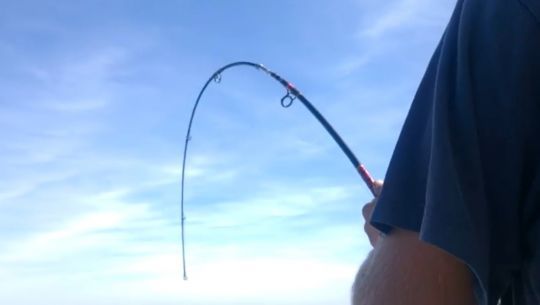
Fishing tackle for conger eel
When it comes to equipment, we're going to have to pull out all the stops to fight our game partner.
From the shore, docks or breakwater, we use surf-type rods 4 to 5 m long with a suitable reel fitted with 40 to 60-centimetre nylon on which a sturdy leader will be set. Given the size and sturdiness of our partner in crime, a minimum rod weight of 150 grams is highly recommended.
From a boat, relatively short rods are needed for good manoeuvrability, but with plenty of power. They should not exceed 2.50 m in length and 250 g is the minimum. If you can, spinning reels are more suitable for this sporty type of fishing.
In both cases, a pointed or semi-parabolic action is preferable to easily combat conger eels with their formidable defense.
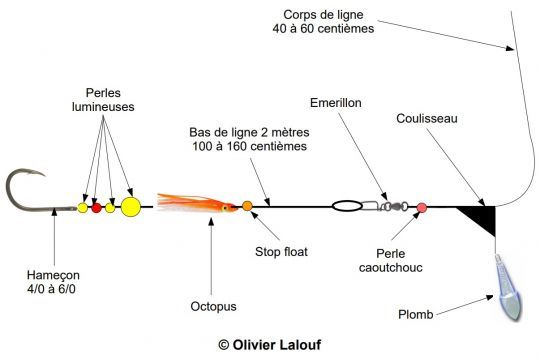
Leaders for conger eel
For leaders, you need accessories that attract the eye, emit vibrations to arouse curiosity and, above all, are very solid. There's no need to use steel cable; a nylon of at least 100 hundredths is enough to counter the conger eel's teeth, and above all, even a large nylon will be supple and mobile in the current, which is much better for thwarting the conger eel's distrust.
The yellow, red, green and blue phosphor beads will attract his vision, while the octopus will attract his curiosity with its vibrations. You can replace the octopus with a good-sized spoon paddle. You can use 1 or 2 single hooks from 4/0 to 6/0, although I recommend circle hooks, which are very strong and highly recommended when fishing for big fish.
The slider will ensure a smooth start without resistance from the lead, preventing conger eels from spitting out the bait due to the line's lack of resistance. A length of 1.50 m to 2 m allows it to live in the water, undulating with the currents and further attracting our guest.
In short, you need a flashy leader that emits vibrations and, above all, is strong.
Baits and bottoms
The conger eel is an outstanding predator, so you'll be spoilt for choice when it comes to bait. On the menu, you can offer sardines, mackerel, squid, pout or any other fish that your fishmonger will be happy to sell you.
You can use live fish as bait, such as freshly caught saupe, bogues, pout, mullet or mackerel. The latter must be carefully gutted to retain their liveliness.
You'll be looking for conger eels mainly on rocky bottoms, where they live in faults, hollows or under rocks. Fishing depths vary, as conger eels can be found in as little as 1 metre of water, as much as 50 or 100 metres, and much more besides. However, I recommend rocky plateaus at depths of between 7 and 15 meters.
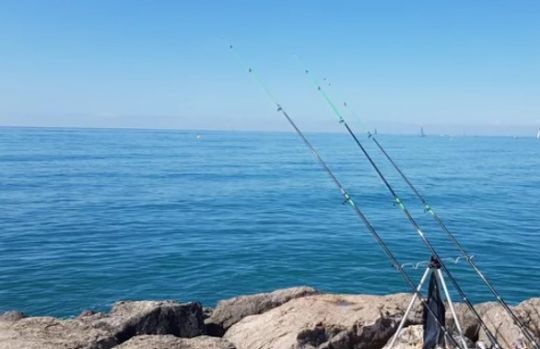
The touch and the fight
As soon as the fish makes contact with the rod, the hook must be hooked in quickly, flush with the lips, otherwise it will hook the fish all the way through to the stomach. If you're using circle hooks, don't make the hook, but start pumping without violence as soon as the fish bends the rod tip.
The fight will be powerful and intense. When fishing from a boat, I recommend you use a fighting harness for the larger specimens, who will certainly use your strength to their advantage. To hoist it onto the boat, grasp the leader by hand once the conger has tired and pull on it. Beware of the conger's jaws and formidable teeth.
The conger's bite can cause serious injuries to the hands of careless anglers. Use gloves and pliers to remove hooks from its mouth and never forget to handle it carefully for the photo, otherwise it will call you to order.

 /
/ 